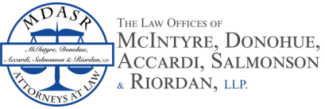August 2021 New York Workers’
Compensation Law Reporter Highlights
Claimant proves work injury caused her retirement
Case Name: Syosset Central School District 121 NYWCLR 87 (N.Y. W.C.B., Panel 2021).
Ruling: In affirming, a Board panel held that the WCLJ properly found the claimant’s retirement after suffering a work accident was involuntary
What it means: Medical advice to retire is not an essential element for a finding that a claimant’s compensable injury played a role in the decision to retire. In this case, the claimant provided sufficient credible testimony to find that her work-related disability caused or contributed to her retirement.
Nursing Home employee establishes claim for COVID-19
Case Name: Elderwood At Hornell, 121 NYWCLR 88 (N.Y. W.C.B., Panel 2021).
Ruling: Upon review, a board panel found the case was properly established for the claimant’s contracture of COVID-19 while working as a CNA at a nursing home.
What it means: A claimant’s credible testimony that her job duties involved close physical interactions with residents in a nursing home facility, that some of the residents displayed symptoms of COVID-19 prior to her becoming ill, and both she and those patients later tested positive, constitutes sufficient evidence of prevalence to establish the case for contracture of COVID-19.
Claimant proves ankle injury arose out of employment, no idiopathic
Case Name: Government Employees Insurance, 121 NYWCLR 91 (N.Y. W.C.B., Panel 2021).
Ruling: A Board panel held that the claimant’s right ankle injury sustained while walking in the office to her cubicle after speaking with her supervisor arose out of her employment
What it means: Where the claimant’s version of events at the time of the accident, that she was returning to her cubicle when her foot got caught onto something and caused her ankle to invert, is supported by the C-3 filing and the carrier’s IME report, and the employer’s by the employer, sufficient evidence supports the claimant’s version of an accident arising out of her employment.
Evidence of prevalence helps correctional officer establish claim for COVID-19
Case Name: Fishkill Correctional Facility, 121 NYWCLR 92 (N.Y. W.C.B., Panel 2021).
Ruling: Upon review, a Board panel found the claimant, a corrections officer, sustained an accident arising out of and in the course of her employment due to contraction of COVID-19.
What it means: A claimant’s inability to designate exactly when or how she contracted COVID-19 will not preclude a finding that an accident occurred in the course of her employment. Where, as here, the claimant’s work duties include significant contact with the public and coworkers, the claimant’s illness began at a time when COVID-19 was particularly prevalent throughout New York State, she has tested positive and none of her family members contracted the virus, the claimant has established prevalence and is thus entitled to the presumption under WCL section 21 (1) that the accident also arose out of her employment.
Essential worker status is irrelevant to COVID claim
Case Name: FOJP Service Corp., 121 NYWCLR 93 (N.Y. W.C.B., Panel 2021).
Ruling: A Board panel held, first, that the carrier’s request to cross-examine the claimant’s family members was deemed waived per 12 NYCRR 300.38(f). The panel further held that the WCLJ’s determination that the claimant was an essential worker was not necessary or appropriate and is rescinded.
What it means: A claimant’s classification as an essential worker is not required to show that an accident occurred in the course of employment or to establish a case for COVID-19.
WCL doesn’t cover EMT’s claim for injury while riding bike to work
Case Name: New York City Fire Dept., 121 NYWCLR 94 (N.Y. W.C.B., Panel 2021).
Ruling: Based upon a preponderance of the evidence, a Board panel found the claimant’s accident, when he was struck by a car while riding his bicycle to work, did not arise out of his employment.
What it means: The fact that an EMT is wearing his uniform and is several blocks from his station when he is struck on his bicycle while on his way to work does not render his accident within the course and scope of employment.
Claimant fails to establish compensable stress-induced disorder caused by work
Case Name: New York City Fire Dept., 121 NYWCLR 94 (N.Y. W.C.B., Panel 2021).
Ruling: Upon review, a Board panel held that the claimant failed to establish his claim for casually-related adjustment disorder due to witnessing a tragic accident and many “near misses” while working as a forklift driver flagger.
What it means: A forklift driver/flagger who is at work during a tragic accident and has witnessed several “near miss” incidents cannot establish a claim for stress-induced adjustment disorder where, as here, the claimant’s stresses are not greater than those of other similarly situated employees.

Leave A Comment